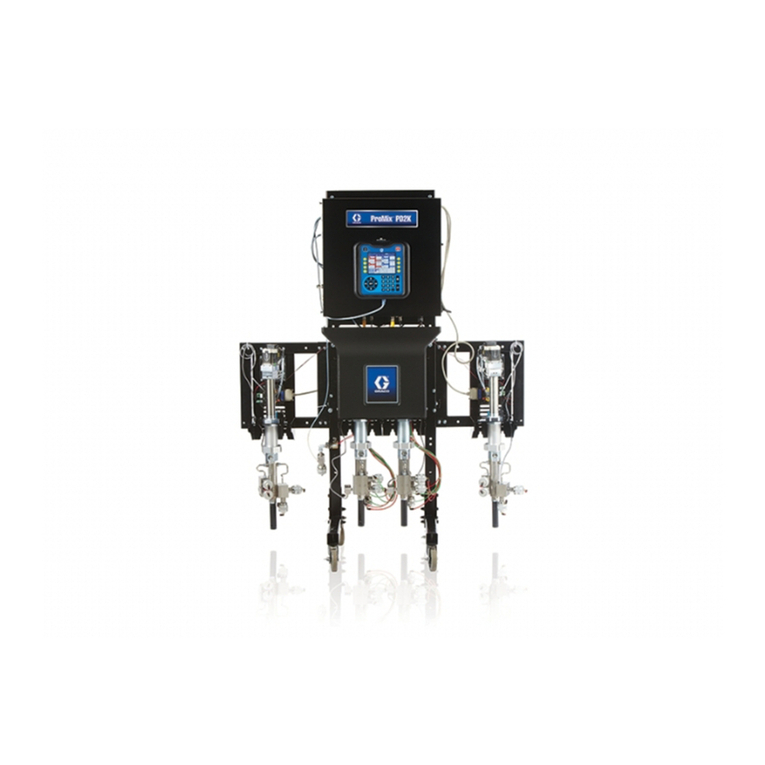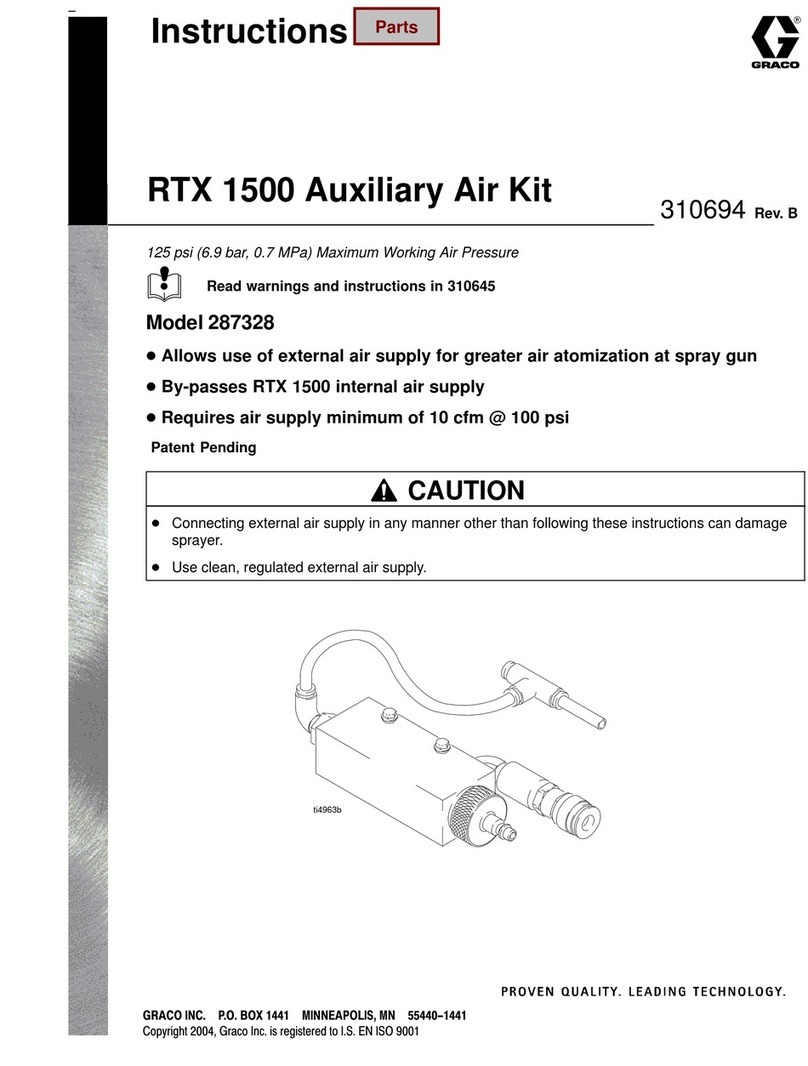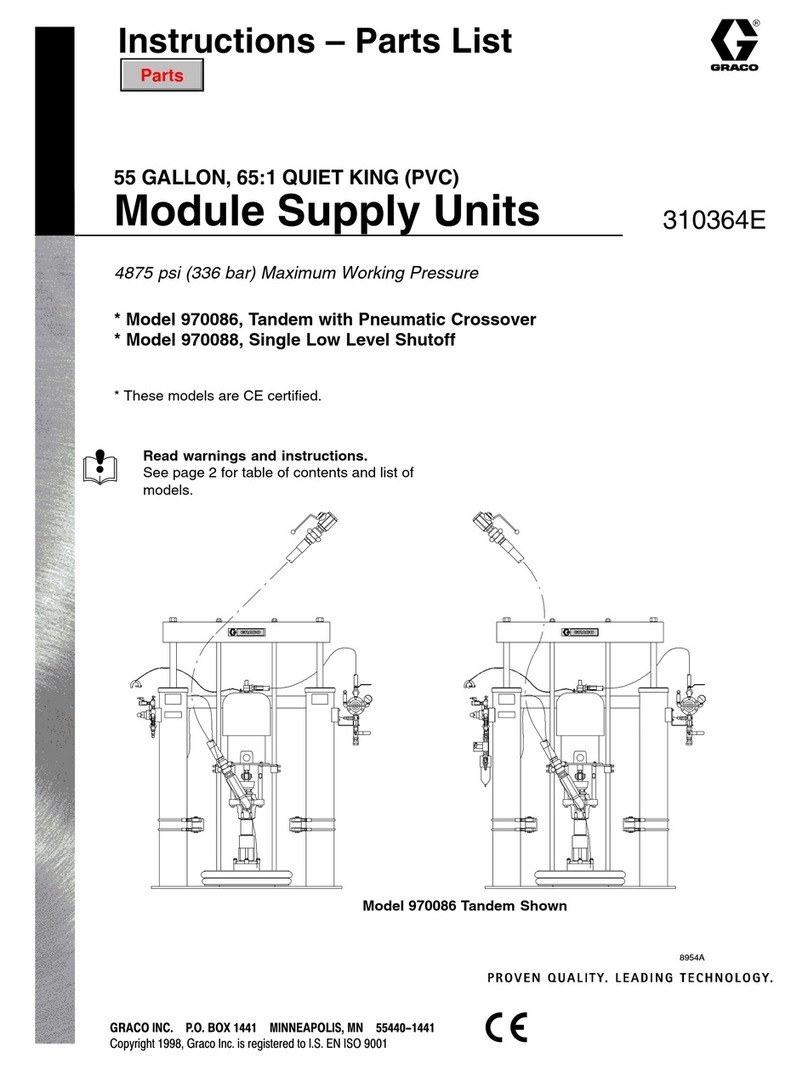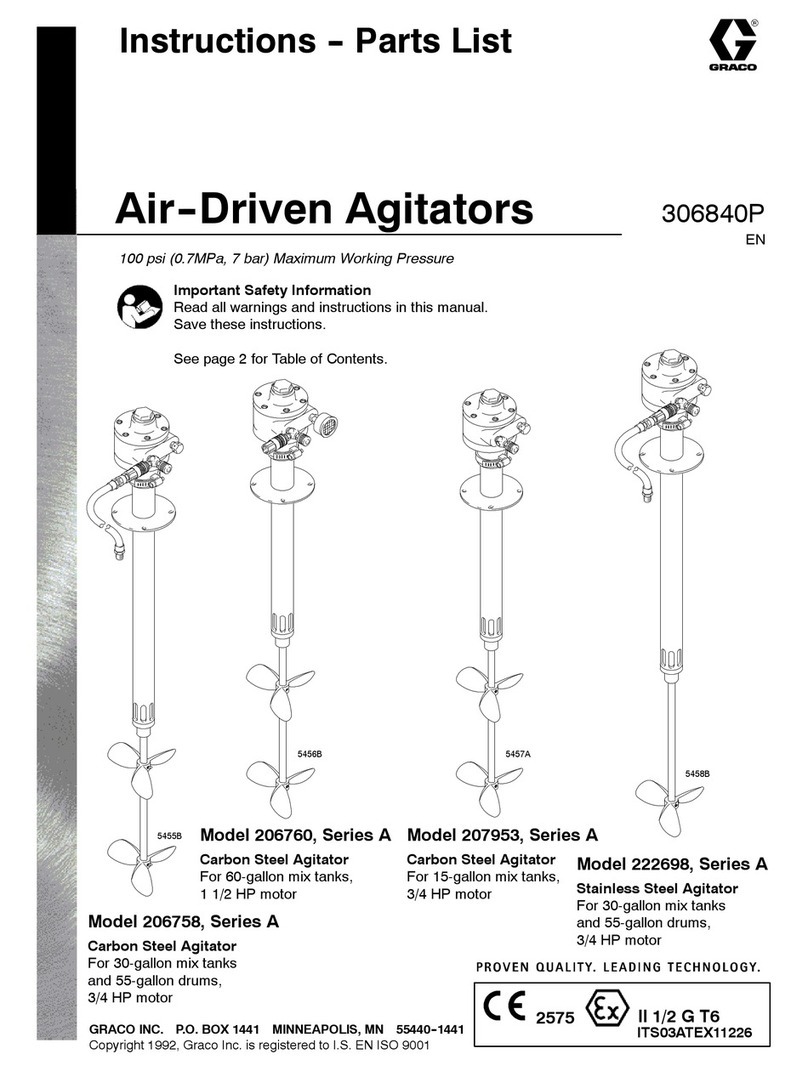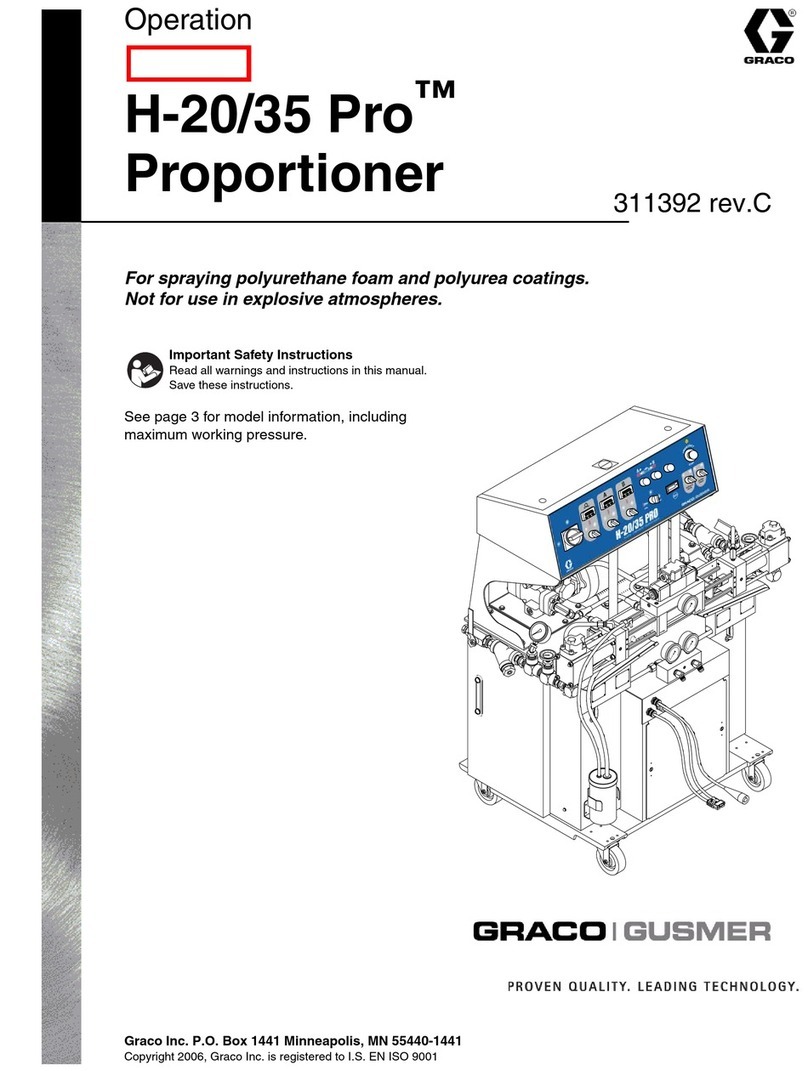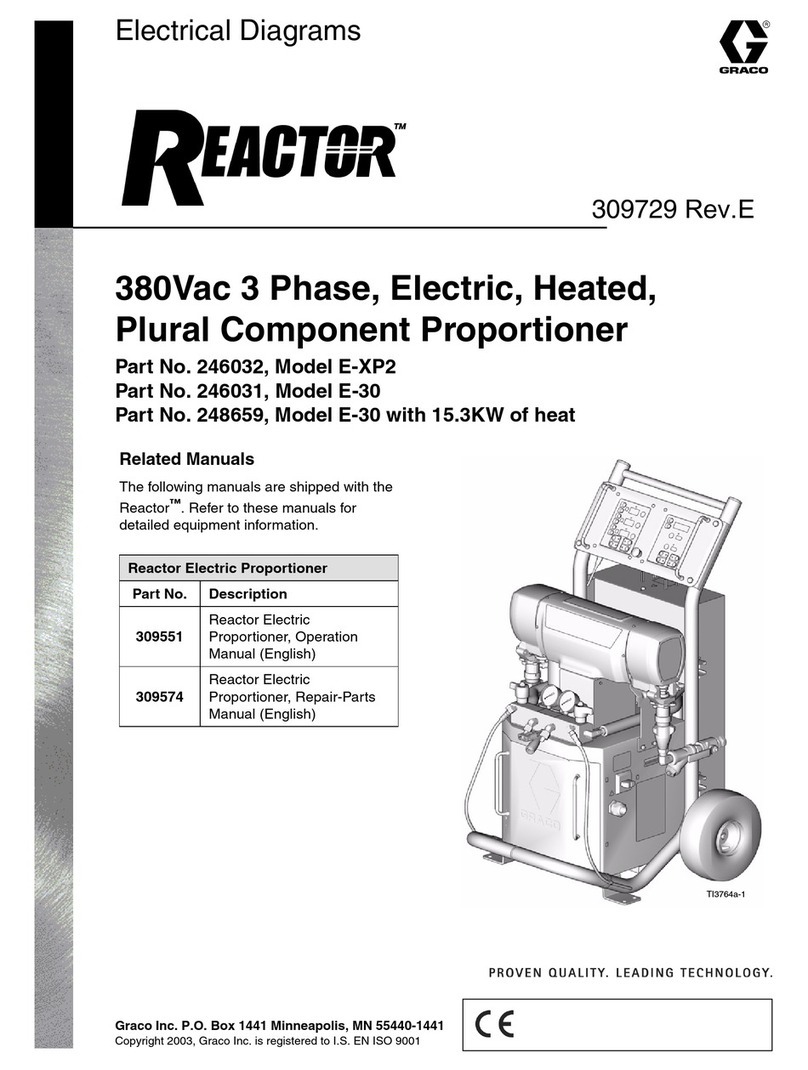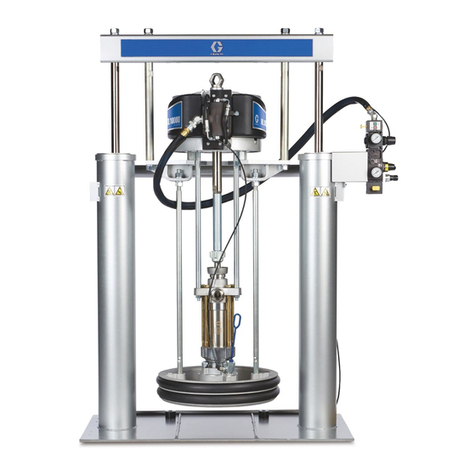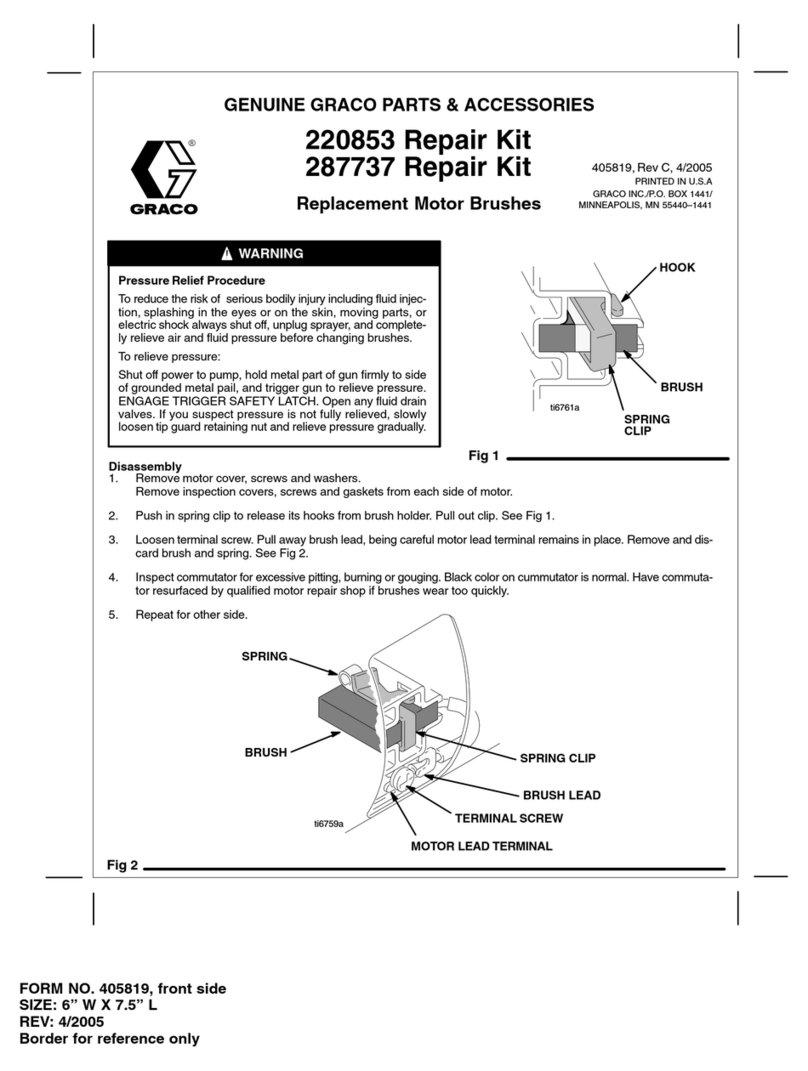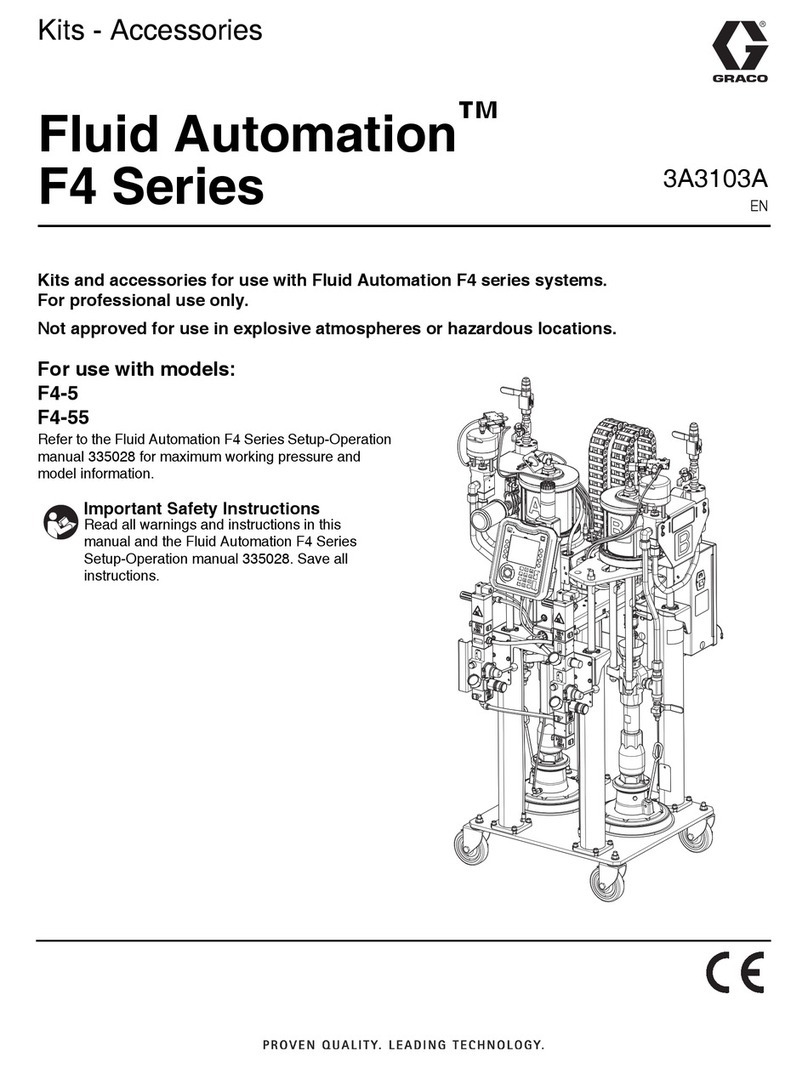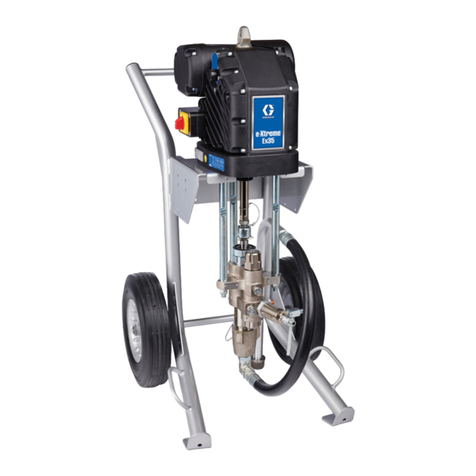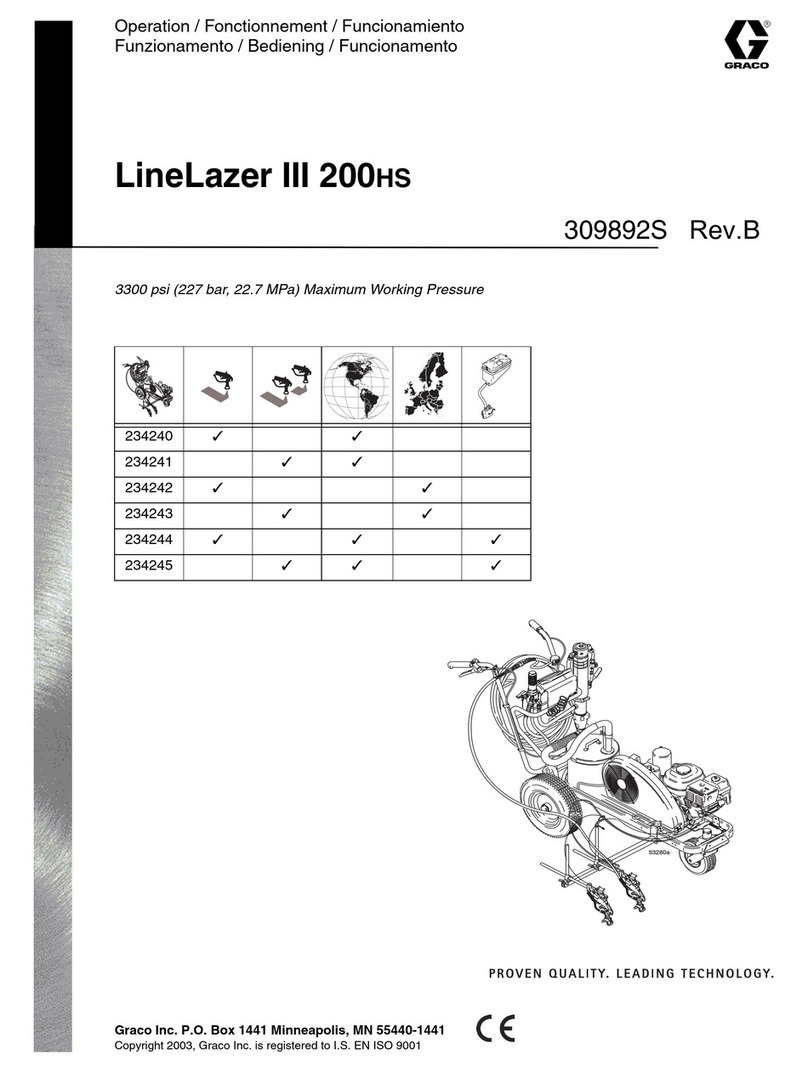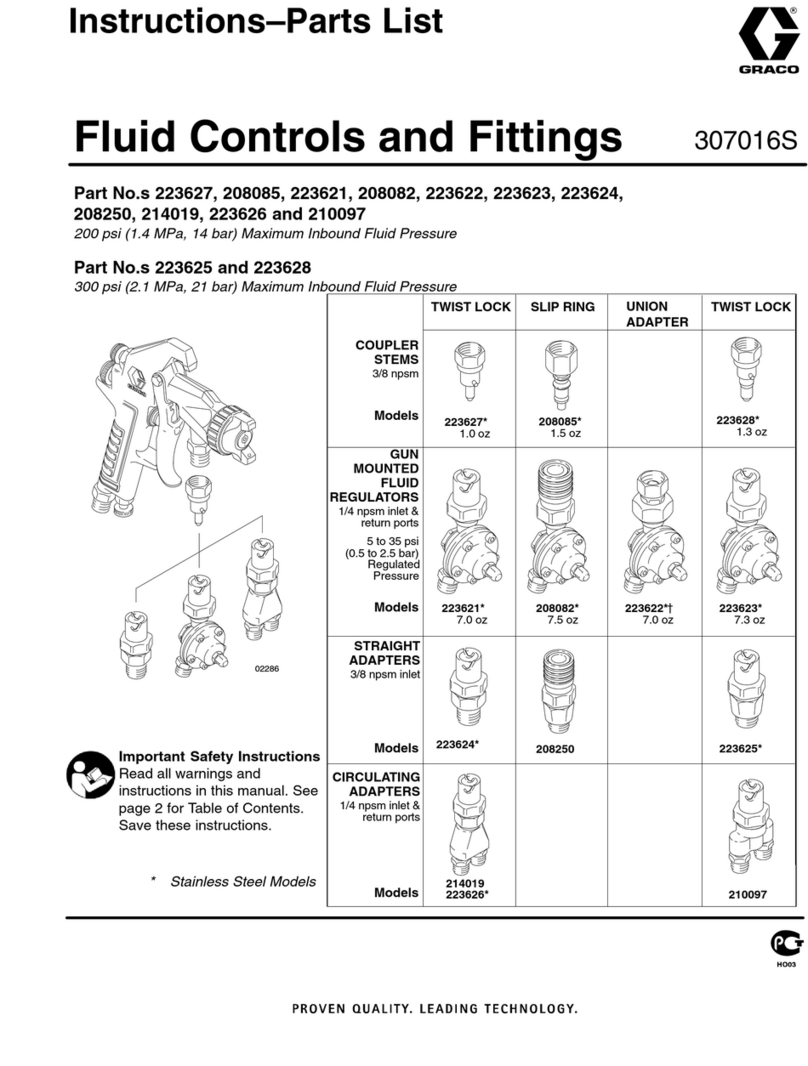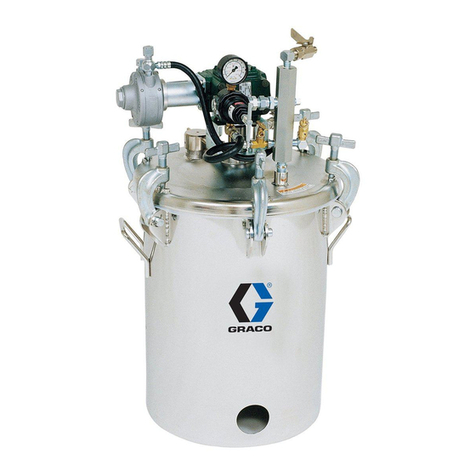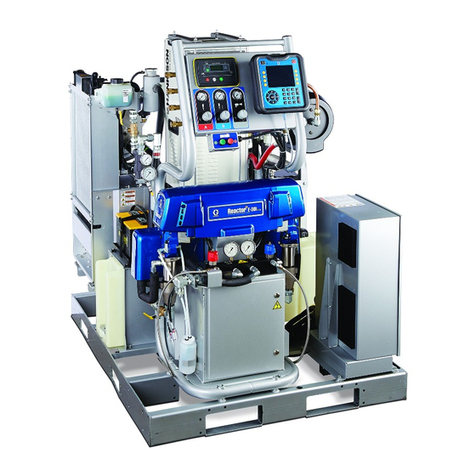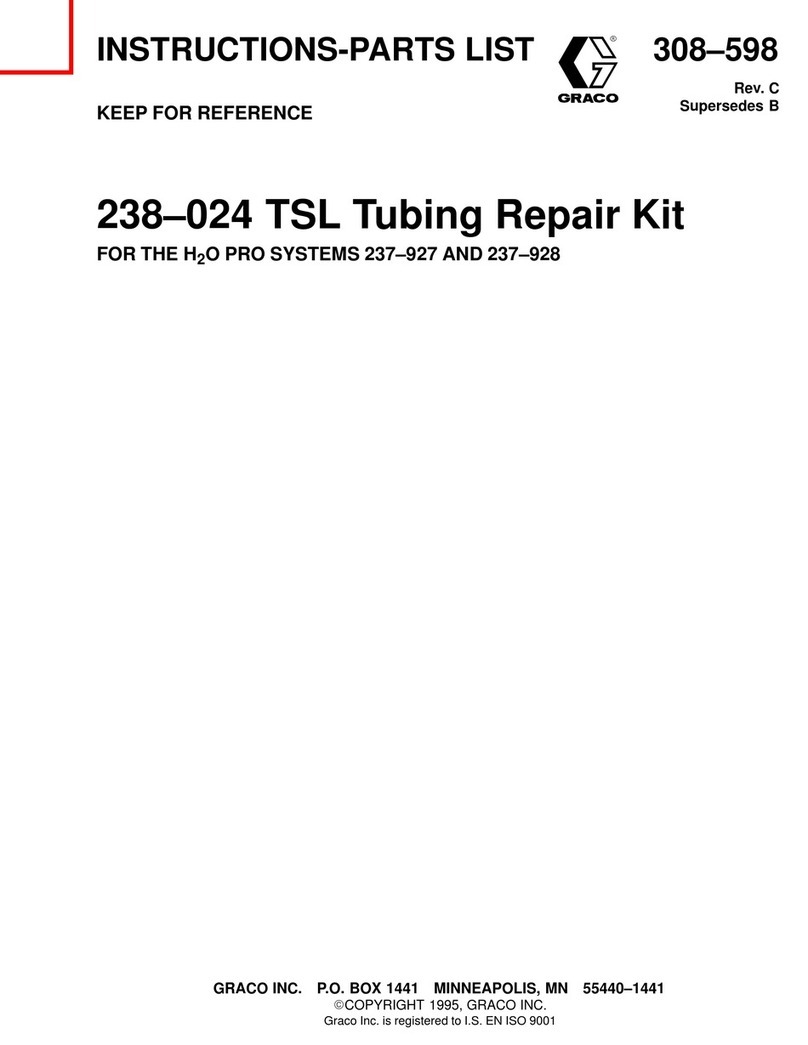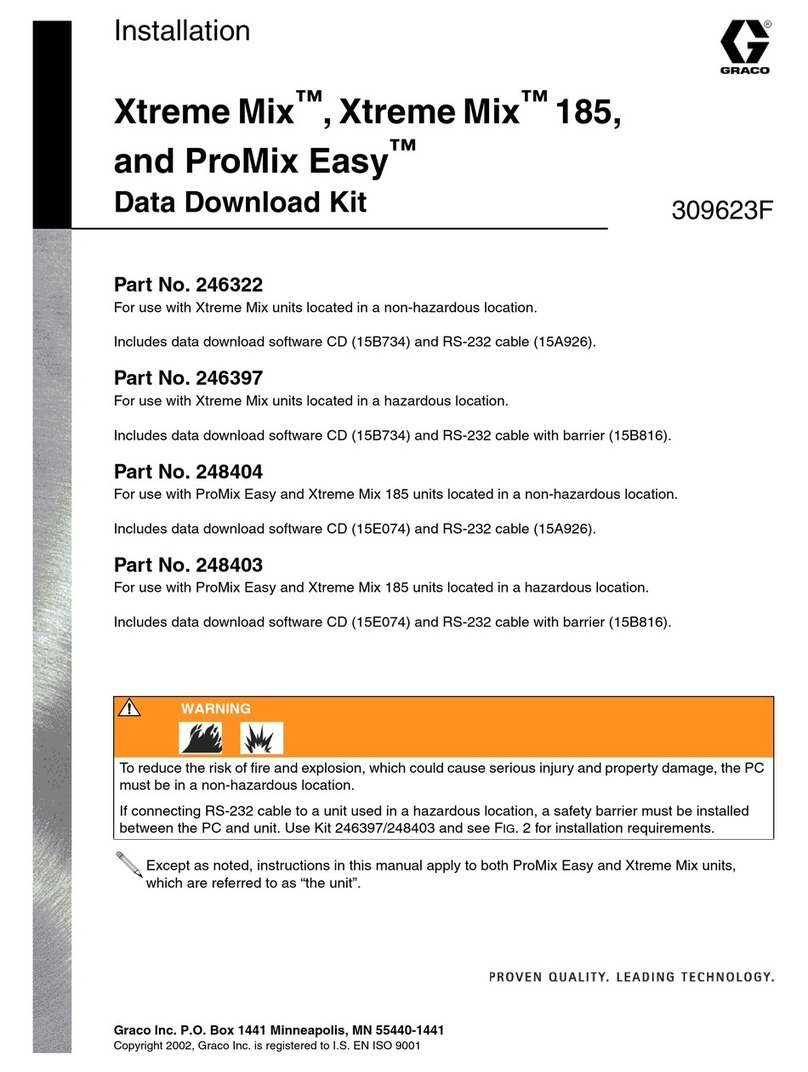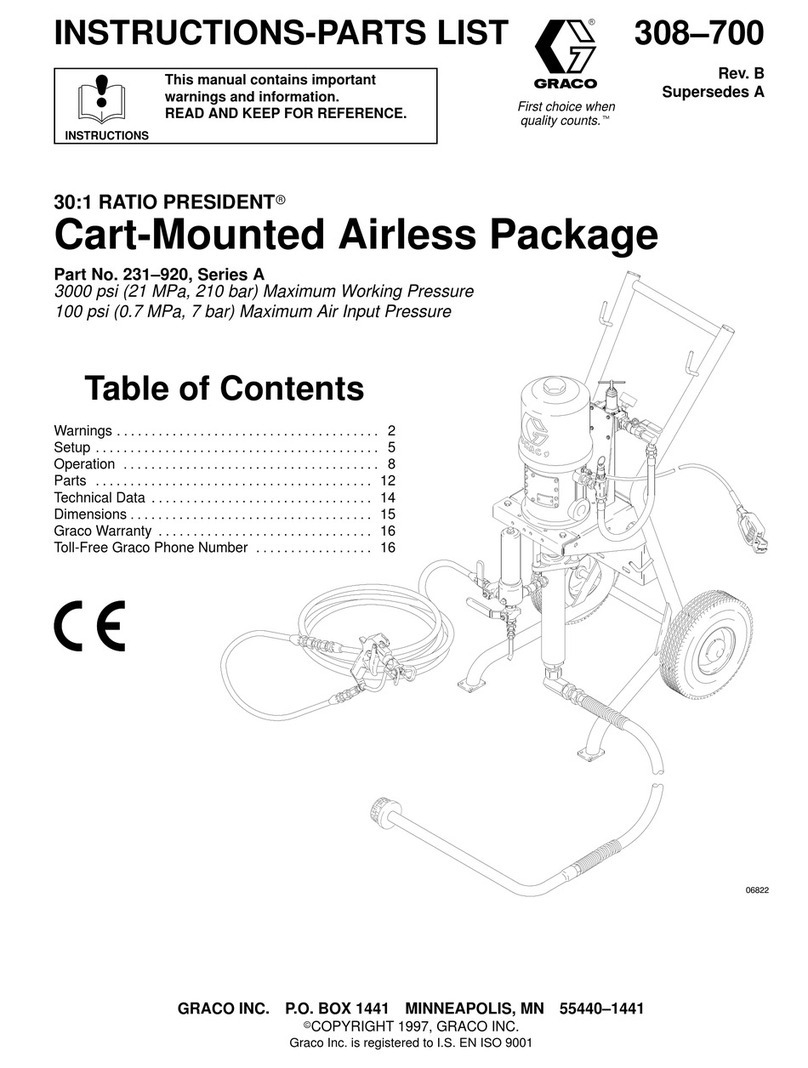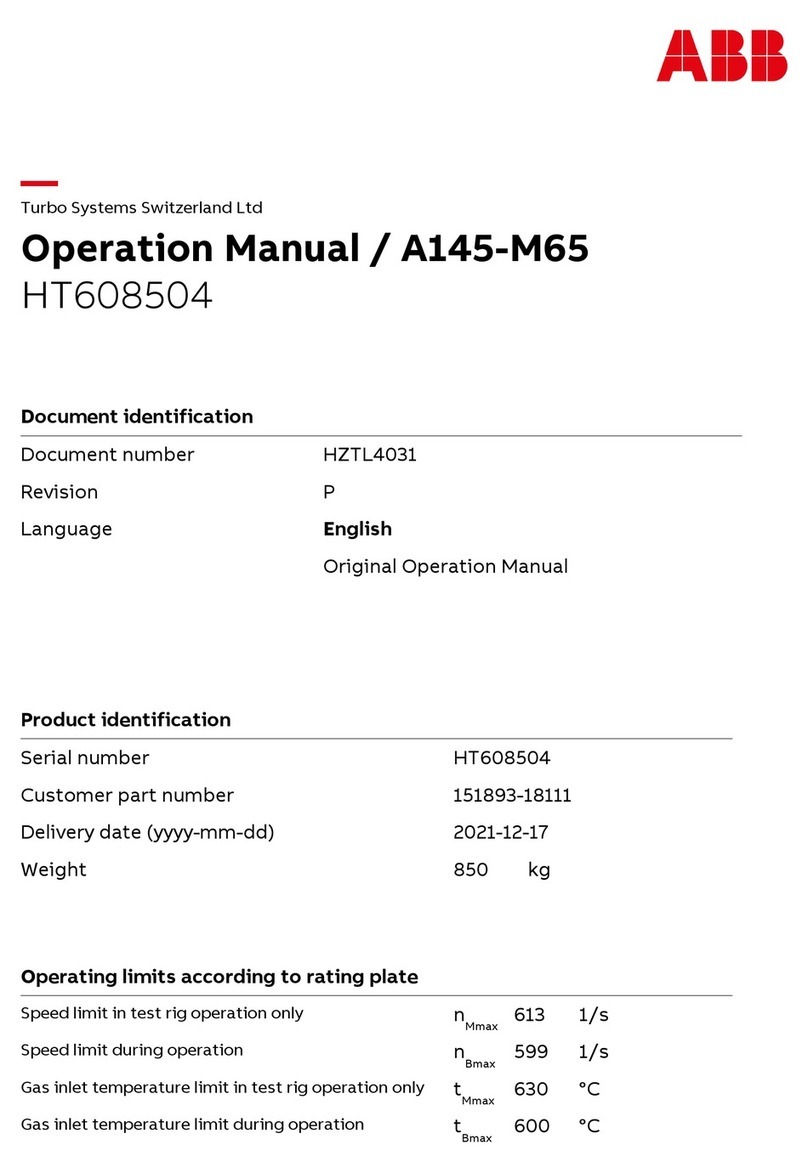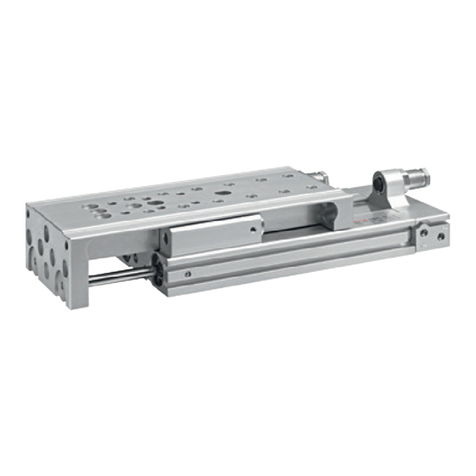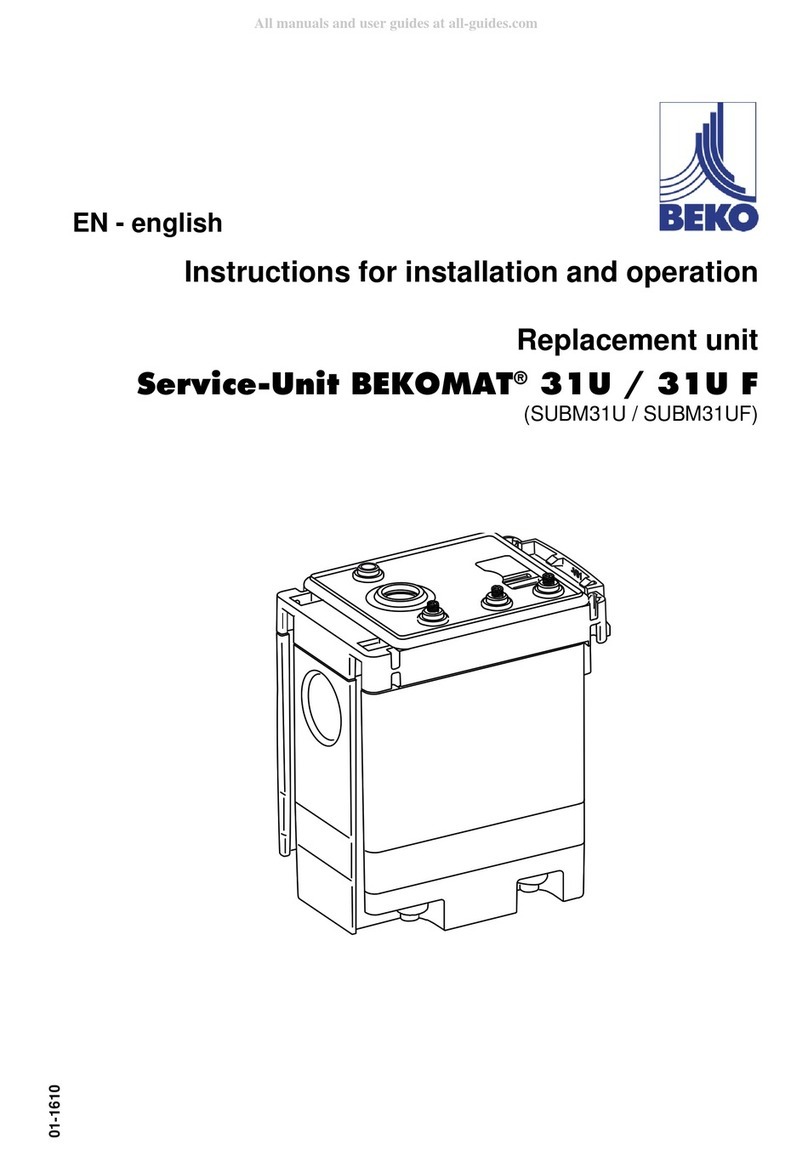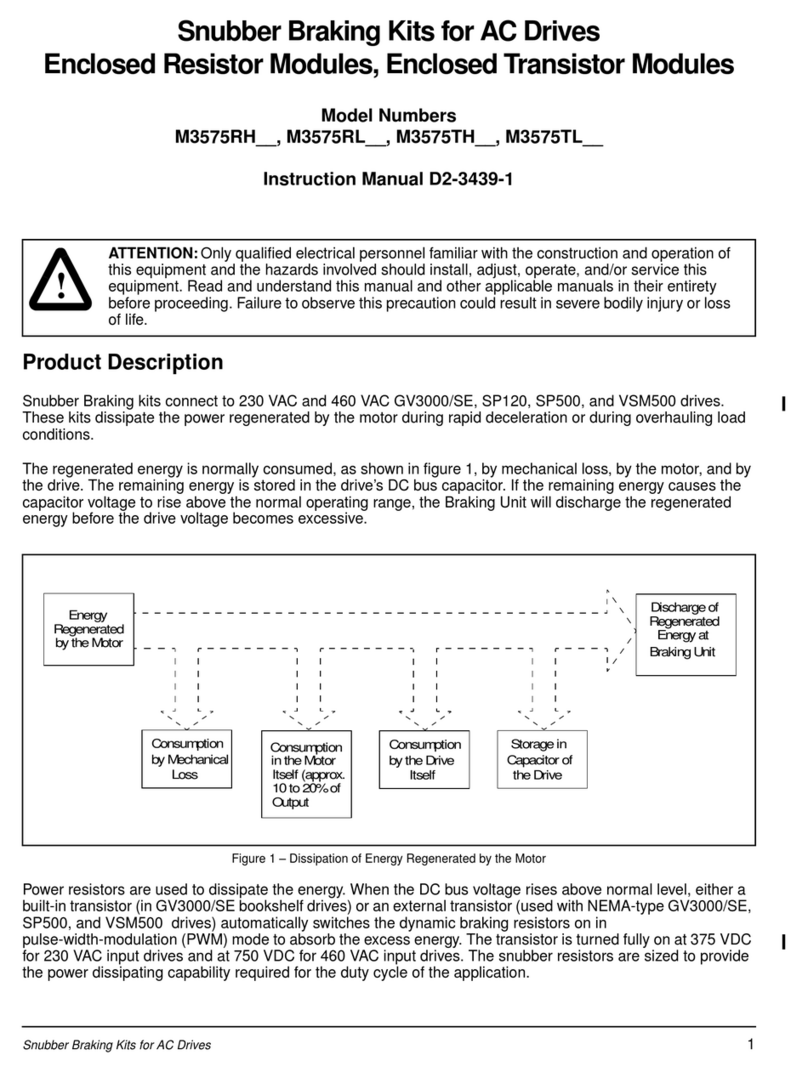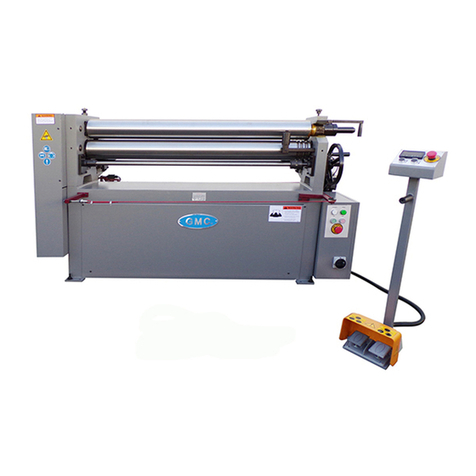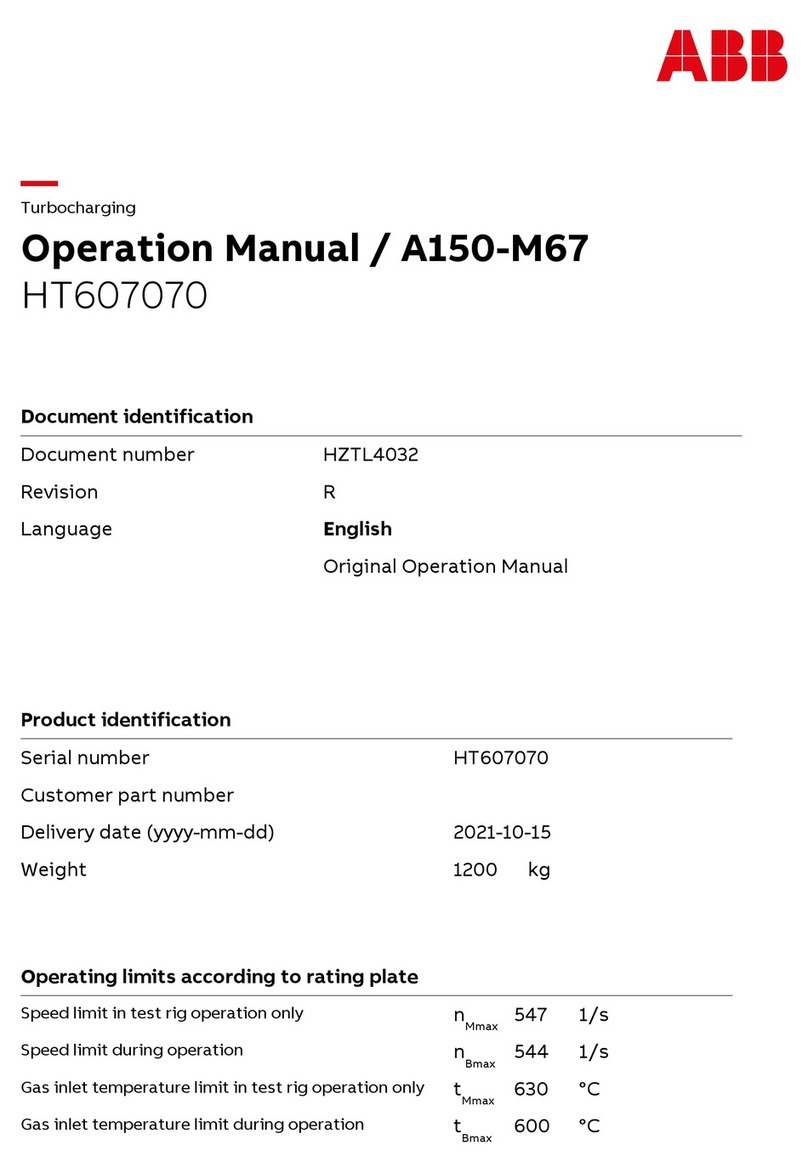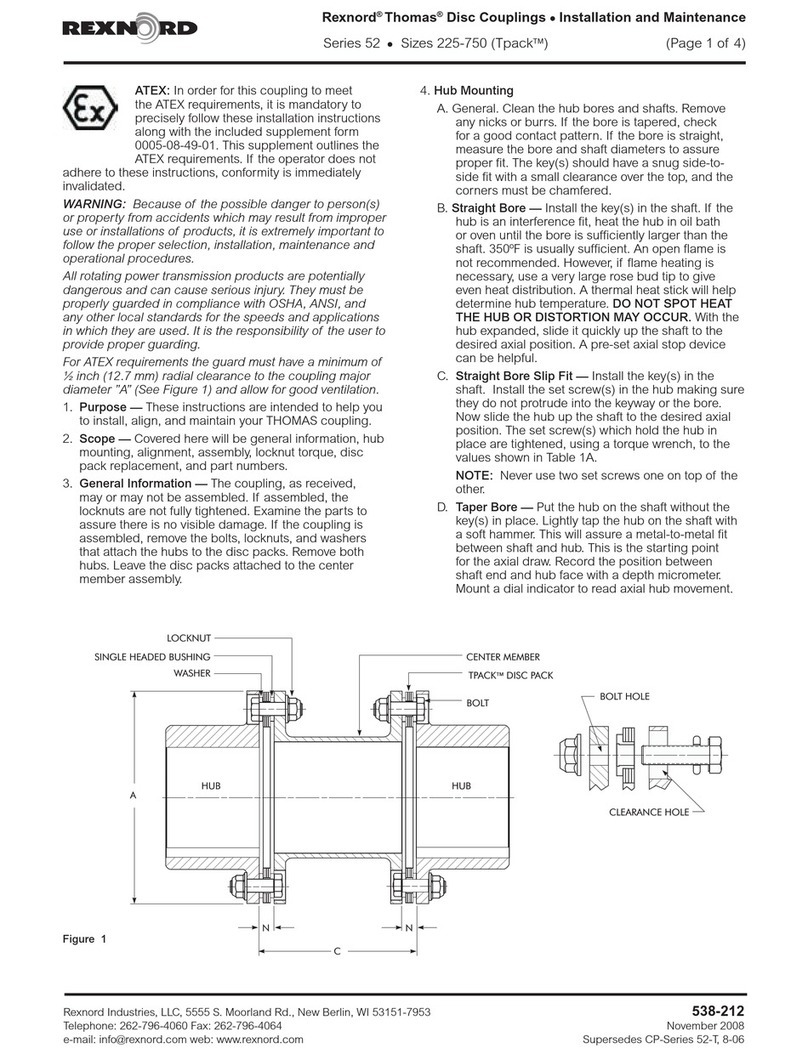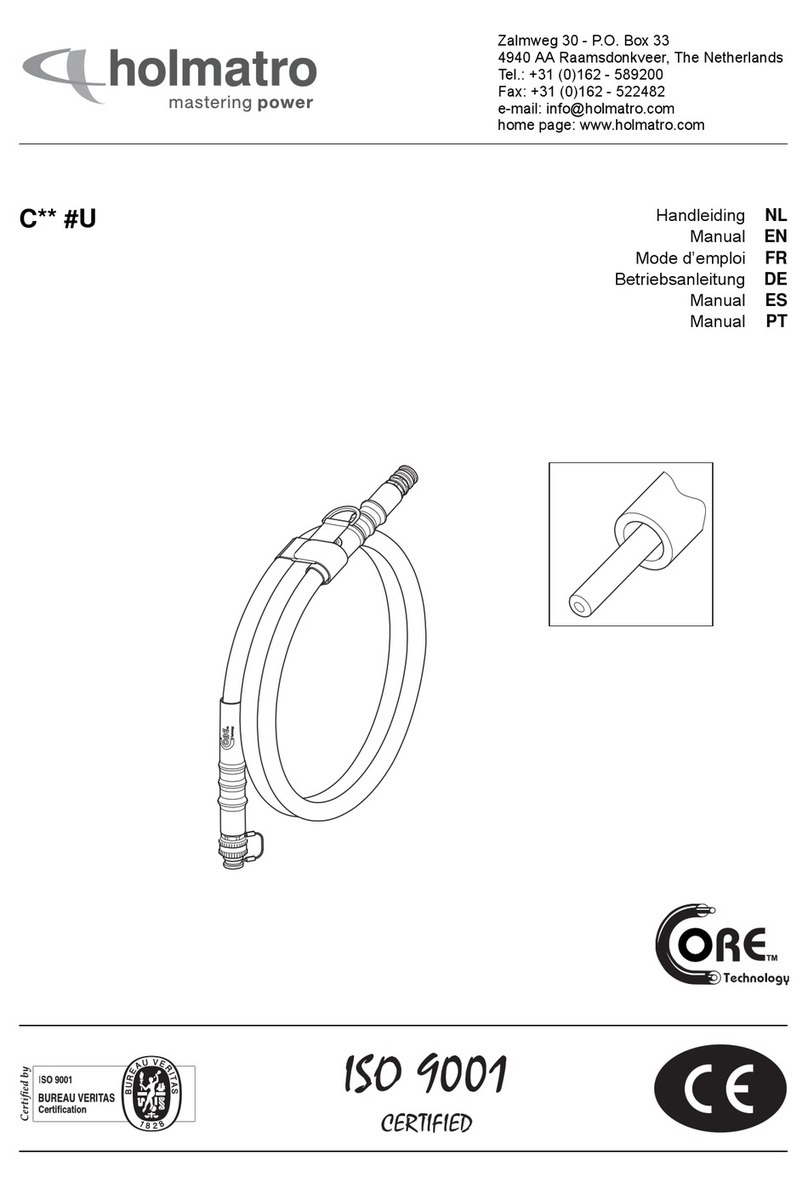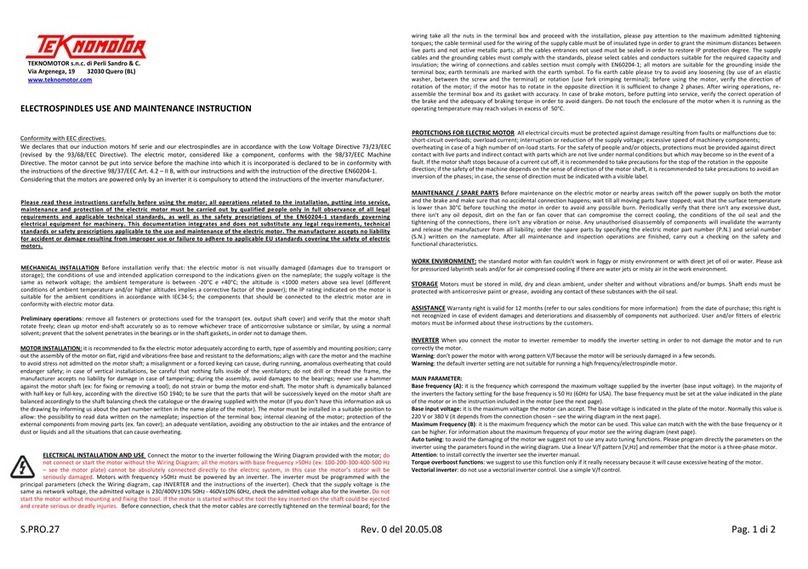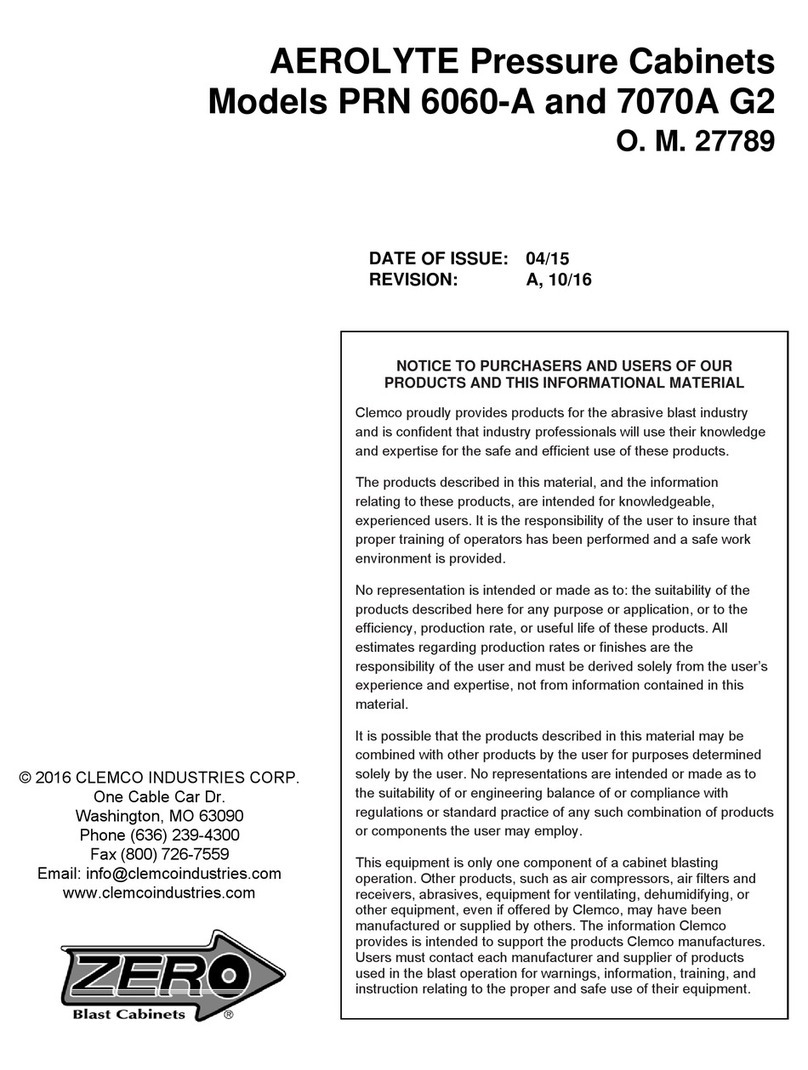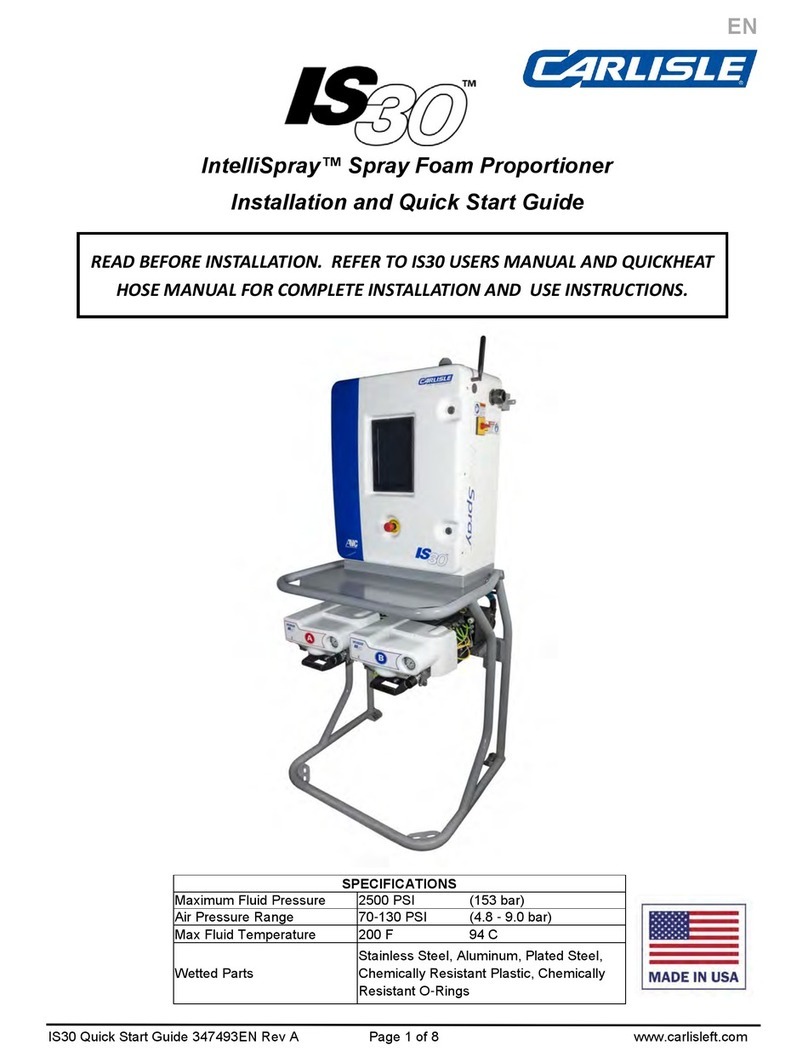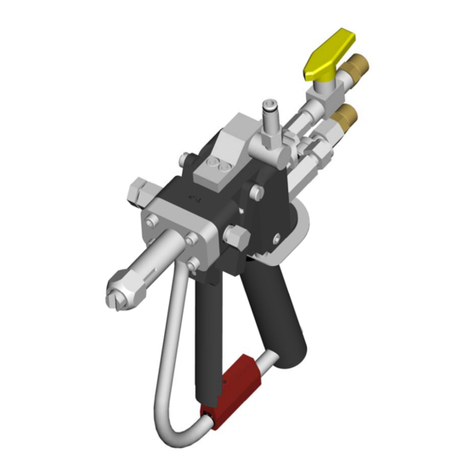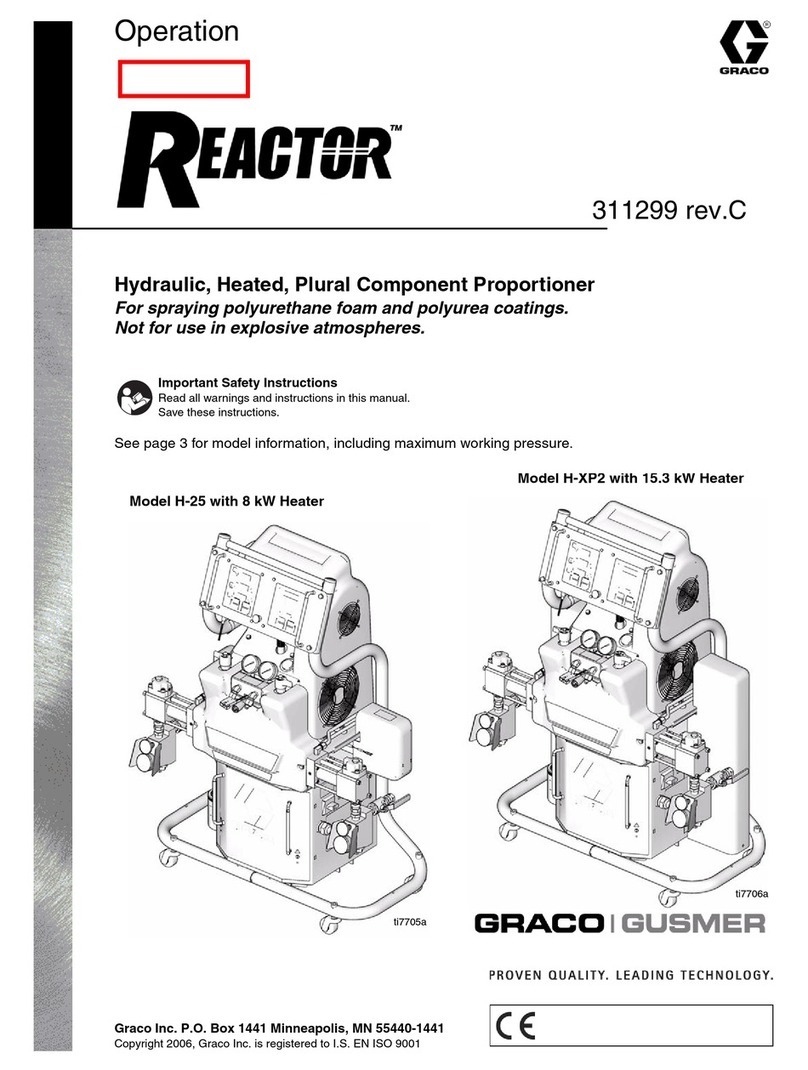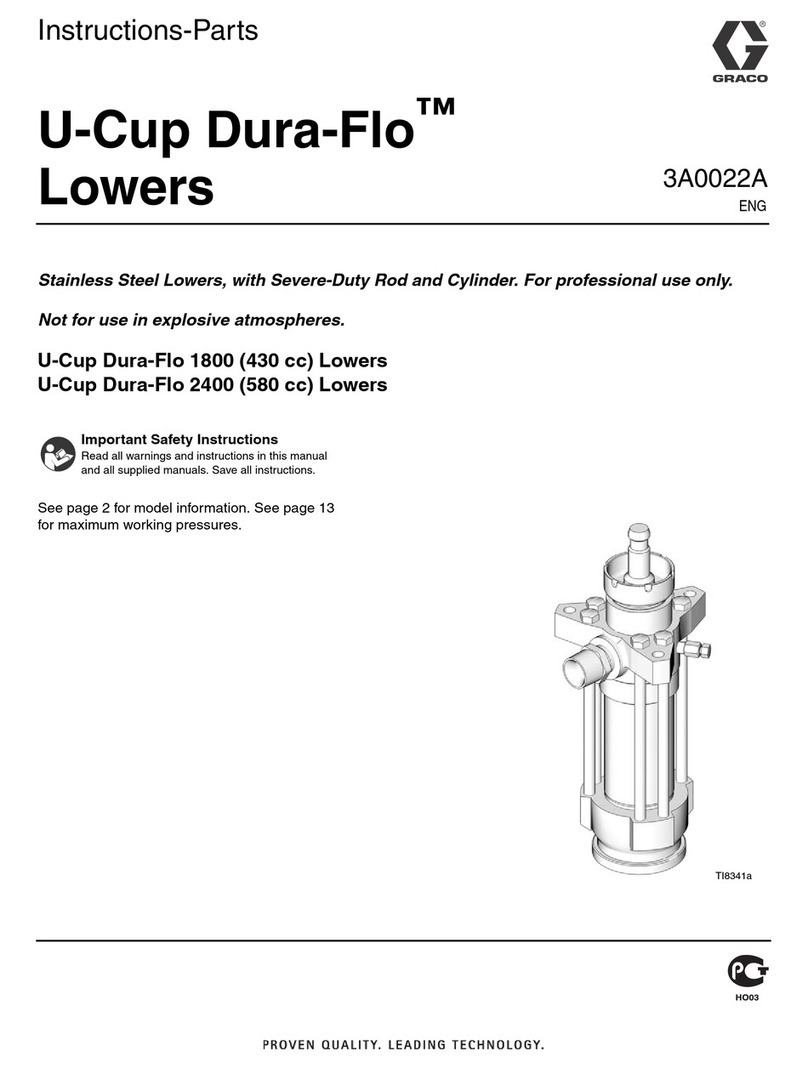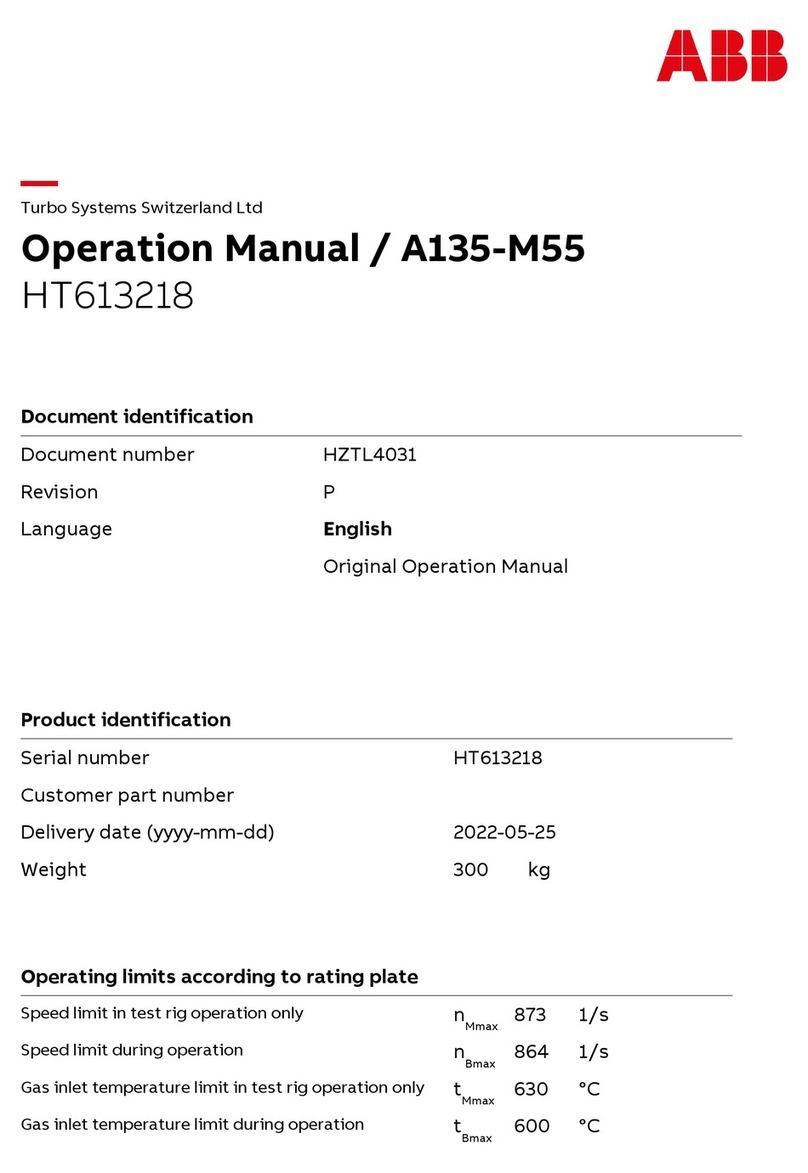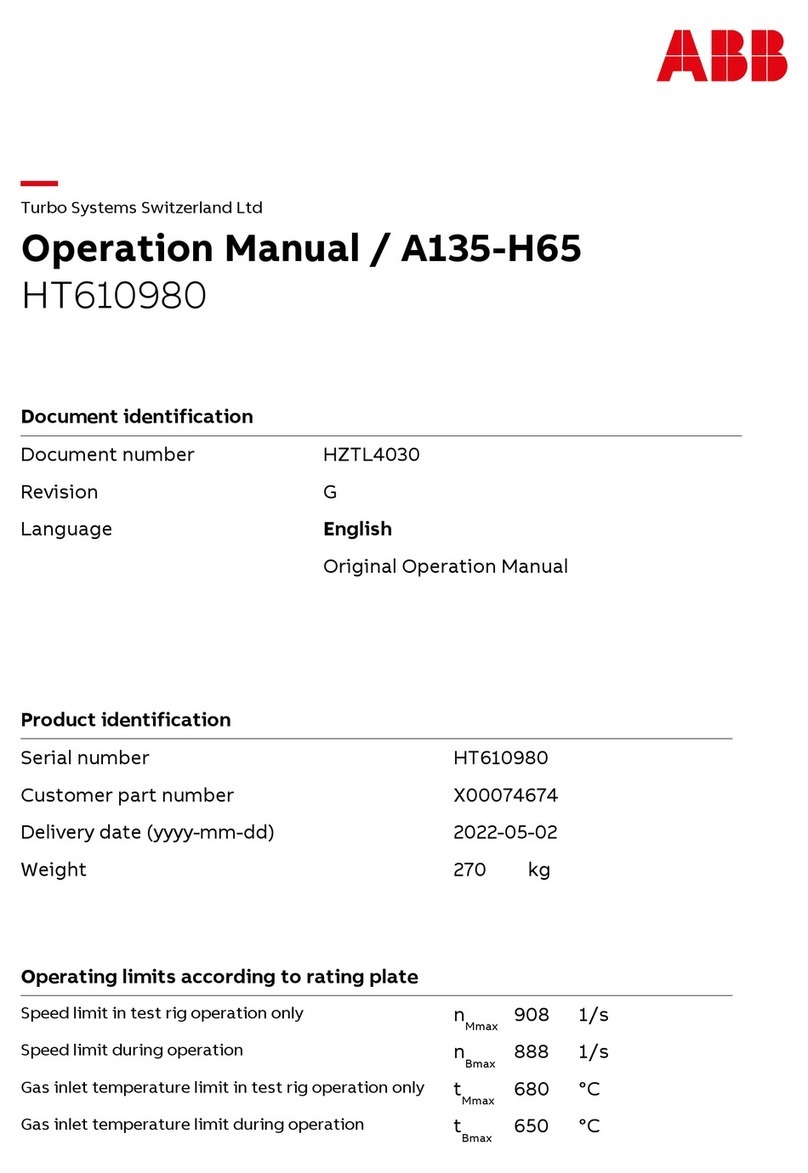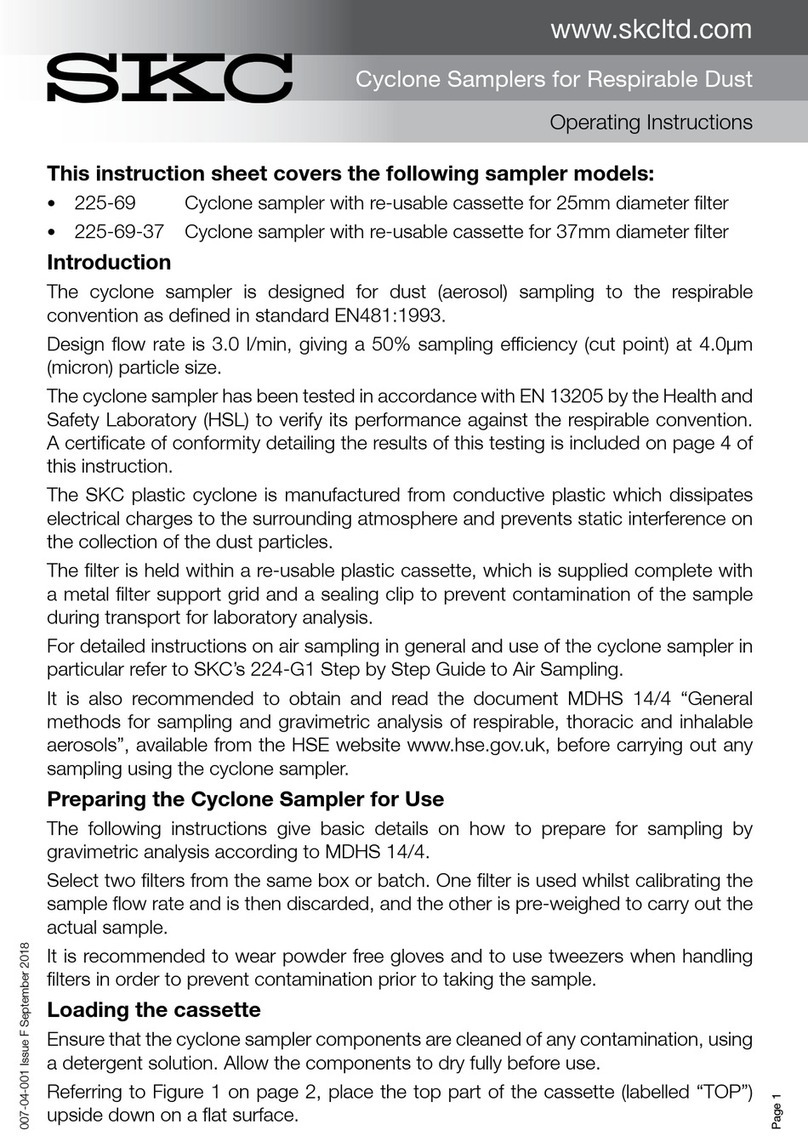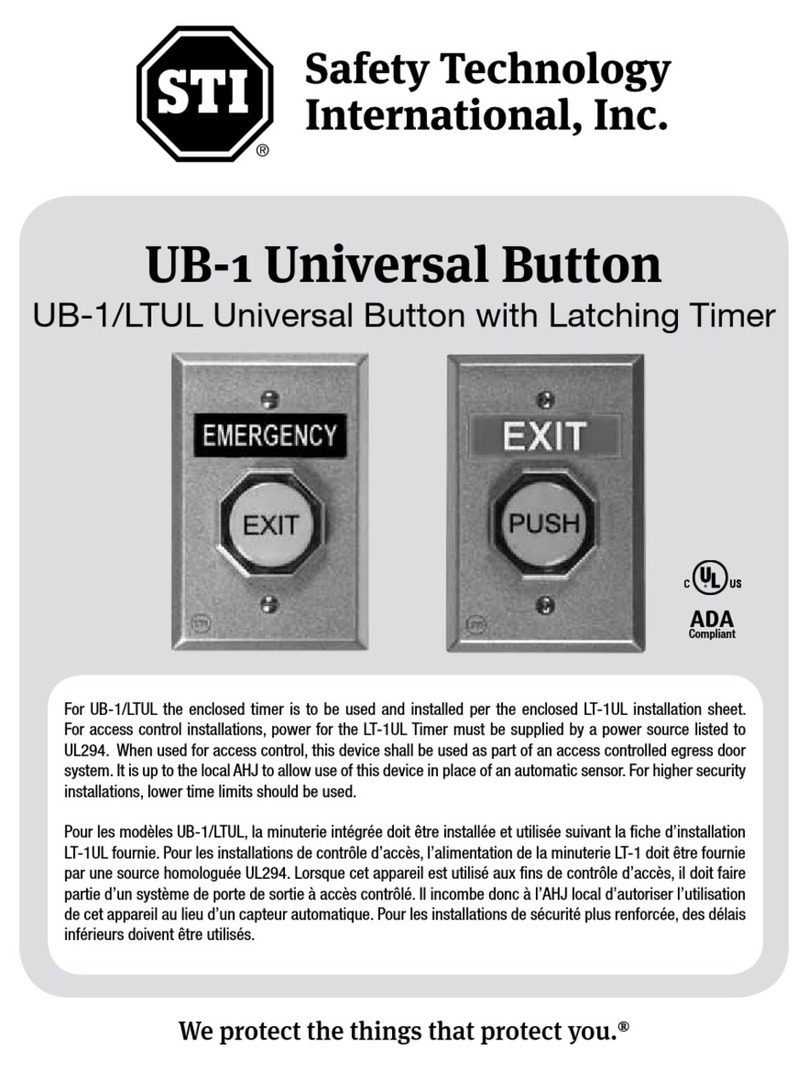
EQUIPMENT MISUSE HAZARD
General
Safety
System
Pressure
Any misuse of the spray equipment or accessories, such asThe maximum safe hydraulic input pressure to thismotor
is
overpressurizing, modifying parts, usingincompatible governed bythe lower displacement pumptowhich
it
is con-
chemicals andfluids, or using wornor damagedparts, can
cause them to ruptureandresult influid injection or other displacement pump assembliesonly, hydraulic input pressure
nected. With Graco Models
207474.
207-655
and
210-208
serious bodilyinjury, fire, explosion or property damage.
of
upto a maximumof
1500
psi
1103
bar)maybeused.NEVER
NEVER alter or modify any part of this equipment; doing
so
exceed
)OM)
psi 169 bar)hydraulic input pressure
with
the
could cause
it
to malfunction. motor connectedto any displacement pump other than those
listed above.
CHECK all spray equipment regularly and repairor replace
wornor damaged parts immediately. properlyrated to withstand themaximumhydraulic and fluid
Be sure that allaccessoriesyou add tothe spray system are
working pressuresof this system.
Readandfollow the fluidandsolvent manufacturer's literature
regarding the use ofprotectiveclothing and equipment.
Fluid
Compatibility
BE SUREthat all fluidsand solvents usedare chemically com-
theseparatepump manual. Always readthe fluid and solvent
patible with the wettedparts shown
in
the Technical Data in
manufacturer's literature before using them
in
the pump.
HOSE SAFETY
High pressurefluid in thehosescanbevery dangerous. If the
hosedevelopsa leak. split or rupturedue to any kind ofwear, HANDLE ANDROUTE HOSES CAREFULLY. Do not pull on
hosestomove equipment. Donotusefluids or solventswhich
damageor misuse, the highpressure sprayemitted from
it
can
c8use.a fluid injection injury or other serious bodily injury or are not compatible
with
the inner tubeand cover ofthe hose.
property damage. DO NOT exposeGraco hose to temperatures above
lWF
(82OC) or below-40°F
l-40°C).
ALL
FLUID
SPRAYHOSES
MUST
HAVE
SPRING
kinks or bends at or closeto thecoupling which can result
in
GUARDS1
Thespring guards helpprotectthe hose from
hose rupture.
TIGHTENall fluid connectionssecurelybefore each use. High
pressurespray to be emitted from thecoupling.
pressure fluidcandislodge a loose coupling or allowhigh
NEVER use a damaged hose. Before each use, check the en-
tirehosefor cuts, leaks, abrasion, bulgingcover, ordamageor
movement of thehose couplings. .Ifany
of
these conditions
exist, replacethe hosa immediately. DO NOT tryto recouple
repaired hose cannot contain the
high
pressurefluid.
high pressurehoseor mend
it
with
tape orany other device. A
Hose
Grounding
Continuity
Properhose grounding continuityisessentialto maintaininga
groundedspraysystem. Checktheelectricalresistanceof your
does not have a tag on
it
which specifiesthe maximumelec-
hydraulic and
fluid
hoses at least once a week.
If
your hose
trical resistance, contact thehosesupplieror manufacturerfor
the maximum resistance limits. Use
a
resistancemeter
in
the
appropriate rangefor your hosetocheck the resistance.
If
the
resistance exceeds the recommended limits, replace
it
im-
your system hazardous. Also read FIRE
OR
EXPLOSION
mediately. An ungroundedor poorly groundedhosecan make
HAZARD,
below.
FIRE
OR
EXPLOSION
HAZARD
Static electricity is created by the high velocity flow of fluid
through the pumpand hose. If every part of thespray equip-
ment is not properly grounded, sparking may occur, and
the
system may become hazardous. Sparking may also occur
when plugging in orunplugging a power supply cord.Sparks
can ignite fumes from solvents and the fluid being sprayed,
dust particles and other flammable substances, whether you
are spraying indoorsor outdoors, and can cause a fire or ex-
plosionandserious bodily injury and propertydamage. Do not
plug
in
or unplug any power supply cords
in
the spray area
when there is any chance ofigniting fumes still in theair.
while using this equipment, STOP SPRAYING IMMEDIATE-
If
you experience any static sparking or even a
slight
shock
usethesystem again
until
the
problem hasbeenidentified and
LY.Check the entire system for positive grounding. Do not
corrected.
Grounding
TO reducethe risk of static sparking. ground thepumDanda11
other spray equipment used or iocated
in
the spray area.
CHECK your
local
electrical code
for
detailed grounding
in-
ground all of this spray equipment:
structions for your area and type of equipment. BE SURE to
1.
Pump:
usea ground wireand clampas instructedonpage
4.
2.
Fluid
endhydraulichoses: use only groundedhoses. Refer
to Hose Grounding Continuity,above.
3.
Hydraulicpowersupply:follow manufacturer's recommen-
dations.
4.
Spray
gun
or dispensing valve: obtain
grounding
through
connection to a properly grounded fluid hose and pump.
5.
Object beingsprayed: according to your
local
code.
6.
Fluid
supply container: according to your local code.
7.
A//
solvent pails used when flushing, according to local
code. Use only metelpails, which are conductive. Do not
placethe pail on a non-conductive surface, such as paper
or cardboard, which interrupts the grounding continuity.
8.
To
maintain grounding continuity whenflushing or reliev-
ing
pressure, always holda metal part of the gun firmly to
the side of a grounded metalpail, then trigger the gun.
Flushing
Safety
Reduce the
risk
offluid injection injury, static sparking, or
splashingby following thespecificflushing procedure givenin
your separatepump instructionmanual. Follow the Pressure
guns
only1
before
flushing.
Holda metal part
of
the
gun
firmly
Relief Procedure onpage
2,
and remove the
spray
tip
(spray
to thesideof a grounded metalpail andusethe lowest possi-
blefluid pressure during flushing.












